Goby and shrimp partners
When diving over sand area’s of a dive site there are so many interesting critters that are often not seen or ignored by divers, one of these is the symbiotic pairing of the goby and shrimp.
Almost all of our dive sites by there nature have sandy bottoms and instead of passing quickly over them it is good to swim slowly and enjoy watching the behavior of these interesting room mates.
The sandy bottom of the reef is full of interesting creatures and fascinating methods have been devised for survival techniques used by reef inhabitants to prevent becoming food to predatory fish. Often this results in some interesting partnerships between marine creatures. One of the more curious relationships that most divers could have come across is that between the goby fish and the shrimp.
The little goby that firmly stands his ground outside his burrow belongs to a very special group of gobies called “shrimp gobies”. There are 70 or so brightly coloured shrimp gobies recorded worldwide in tropical waters and the western Indo Pacific is home to most of them. Their uniqueness is that they live in partnership with “pistol shrimps”. Pistol shrimps are so named for the loud snapping sound and the jet of water that comes from the rapid closing of a modified claw.
The gobies spend their day near entrance ways keeping their eyes peeled for predators, such as jacks and lizardfish, while the hard-working shrimp bulldoze sand into the open from the burrow below.
The front entrance of the burrow is often reinforced with bits of shell and coral put in place by the shrimp.
The goby will usually sit at the entrance of the burrow maintaining a constant vigil against potential predators, while the shrimp is clearing gravel from the burrow. Whenever the shrimp needs to dump gravel outside the burrow, it is usually exposed to potential predators. However with the Goby keeping lookout, the shrimp places one tentacle on the Goby while exposed, so if the Goby darts inside the burrow, the shrimp is instantly alerted of the presence of a predator and it too darts back inside the safety of its burrow. Often pairs of gobies or pistol shrimps will inhabit the same burrow.
They work between sunrise and sunset, resting with the gobies, inside the burrow at night. And like most homes, burrow construction varies according to its inhabitants. Scientists have even found that the sizes and shapes of burrows depend on the type of sediment available and to some degree on the species of shrimp. So the goby gets a professionally constructed and safe house away from predators, and somewhere to lay its eggs.
Gobies eat micro-fauna and sometimes tiny fish they find near the bottom, the shrimps feed on what they find in their burrowing and hence they do not compete for food.
The special relationship that exists between these two species is called symbiosis. Symbiosis literally means “living together” and can take more than one form but it is always between individuals of different species. It can mean, for example, that only one of the species benefits with no effect on the other, or that one species of the pair benefits but the other is harmed in the process. In the shrimp-goby case both species gain equal benefit and they significantly increase their chances of survival in a hostile world. This particular type of symbiosis is called “mutualism”. Their relationship is one that has developed through a mutual need and benefit to both species.
These animals are dependent on each other. Remove the fish, and the shrimp stops burrowing; the shrimp forage while burrowing, so without a fish, they grow more slowly. The shrimp need their guard goby, and the guard goby needs its shrimp: deny the goby shelter in a burrow, and it will promptly be killed by predators (someone did the experiment). The shrimp keep the goby clean, too: they groom it.
So how do the Gobies and Shrimp find each other in the first place? Shrimp-goby researchers have been trying to figure out this one for a long time, and have conducted numerous experiments to determine whether the Gobies find the shrimp, or vice versa, and also to determine whether they locate each other optically or are attracted chemically. There has been no definitive answer as to who spots who in this symbiotic relationship but it appears that the short sighted shrimp uses chemical senses, and the goby uses it’s much better developed visual sense for finding each other at a very young stage of their life.
Find out more about interactions and partnerships by taking the underwater Naturalist specialty course with Scuba Cat and see the goby and shrimps at many of our dive sites both by daytrip and liveaboard.
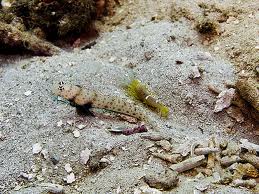

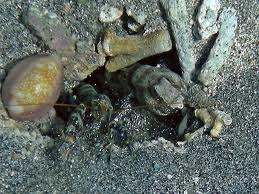
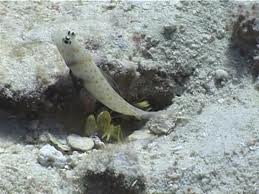
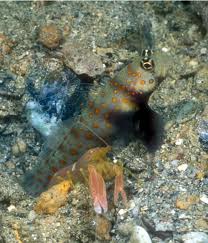
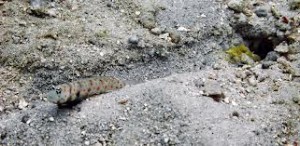
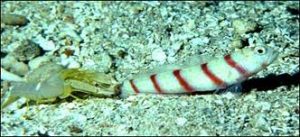
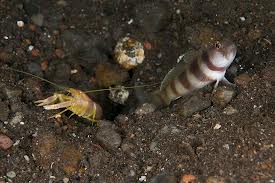
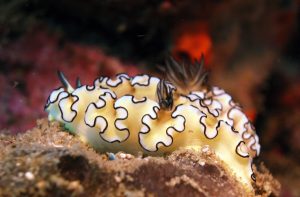
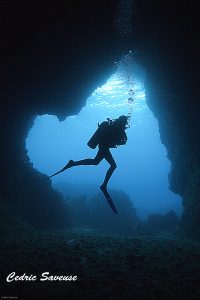
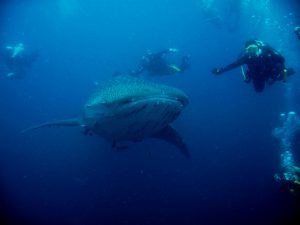
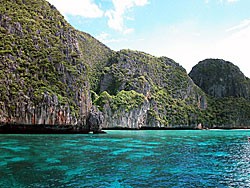





Scubacat Community